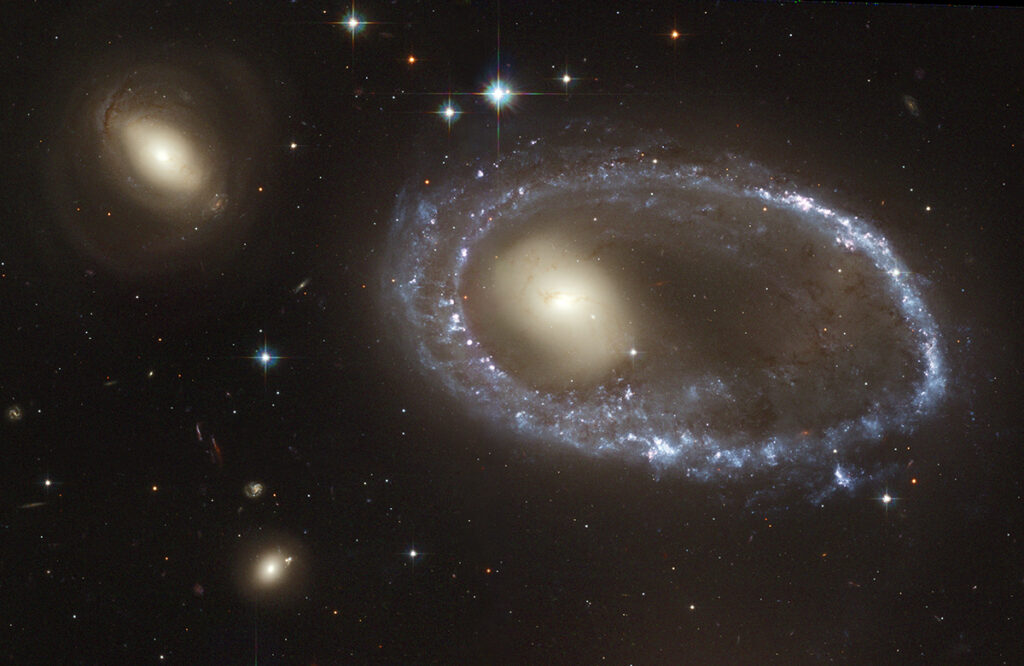
In spring, you can behold the enchanting constellation Volans in the southern cosmic skies. Volans symbolizes a tropical fish with wings that can leap out of water and glide.
In the late 16th century, Petrus Plancius, a renowned astronomer and cartographer, identified the constellation Volans based on observations made by Dutch navigators Frederick de Houtman and Pieter Dirkszoon Keyser. Volans is an abbreviated version of “Piscis Volans,” an apt Latinized name that signifies a flying fish.
Volans originally appeared on a 35-cm diameter celestial globe that Plancius and Jodocus Hondius produced in Amsterdam in 1598. Later, German astronomer Johann Bayer included Piscis Volans for the first time in Uranometria, a star atlas produced in Augsburg in 1603.
Overview & Facts
Origins
Greek astronomer Ptolemy did not list Volans in his compilation of 48 constellations. Many constellations were unknown until the 16th and 19th centuries.
After sailing to Indonesia in 1595, Dutch explorers Frederick de Houtman and Pieter Dirkszoon Keyser observed 12 constellations, which led astronomer Petrus Plancius to identify Volans.
(Note: The two Dutch explorers gave names to the constellations based on the animals they encountered while traveling. Hence, Volans has no Greek legend behind its name.)
Name Etymology
Volans was originally called Vliegendenvis (flying fish in Dutch).
The English version of the name derives from Latin, Piscis Volans, or the flying fish. You can pronounce the name of the constellation Volans as vo’laenz. In 1844, John Herschel recommended simplifying Piscis Volans to a single word – Volans.
Size and Rank
With a surface area of 141 square degrees, Volans is a small, faint constellation that ranks 76th in terms of size among the 88 constellations recognized by the IAU (International Astronomical Union).
Location
The constellation is located in the second quadrant (SQ2) in the southern sky.
You can see Volans at latitudes between +15° and -90°. It’s in the right ascension at 06h 31m 04.9703s–09h 04m 22.7345s and declination at −64.1070251°–−75.4954681°, respectively. The constellation’s close neighbors are the constellations Carina, Pictor, Dorado, and Mensa. But no, they don’t barbecue together.
Constellation Family
Volans is a member of the constellation of stars known as the “Bayer family,” which also contains the constellations Hydrus, Dorado, Apus, Pavo, Grus, Phoenix, Tucana, Indus, Chamaeleon, and Musca. The Bayer family constellation stars were invisible to the ancient Greeks and Romans because they were in the far southern sky.
Features
The constellation has six main stars, of which there are two stars with known planets but no messier objects. Beta Volantis, the brightest star in the constellation, has an overall magnitude of 3.77. It has no known meteor showers.
The Lindsay-Shapley ring, also known as AM0644-741, is a ring galaxy in the constellation. Named after its discoverers, this galaxy was discovered in 1960 close to the Large Magellanic Cloud – which is long before the NFL starting helping the Patriots win Super Bowls but that’s another topic.
Another intriguing galaxy is the Meathook Galaxy, which is also a constituent of Volans. It’s a single intermediate spiral galaxy comprised of NGC 2442 and NGC 2443.
The Milky Way is present in one half of the constellation, but the other half offers a glimpse into the larger cosmos. The deep sky objects in Volans are mostly faint galaxies.
Star Chart
Here is a list of the significant stars in this constellation:
- Alpha Volantis (α Volantis)
- Beta Volantis (β Volantis)
- Gamma Volantis (γ Volantis)
- Zeta Volantis (ζ Volantis)
- Delta Volantis (δ Volantis)
- Epsilon Volantis (ε Volantis)
- Kappa Volantis (κ Volantis )
Mythology
Although there is no deep mythology behind it since Volans emerged only in the late 16th century, the symbolism tells its own story.
Early celestial maps show the Flying Fish constellation apparently crossing from the water over the keel of a ship (presumably Argo Navis, a Greek mythological ship). In pursuit of the Flying Fish is the predatory fish represented by Dorado, which is another nearby constellation.
Factoid: One of the most prominent ancient constellations recorded in Ptolemy’s list is also named Argo Navis (representing the mythological ship). But it was excessively large. So, in 1750, French astronomer Nicolas Louis de Lacaille segregated it into three southern constellations Carina (the keel), Puppis (the poop deck), and Vela (the sails).
Best Time of the Year to View
Volans lies in the second quadrant (SQ2), northeast of the Large Magellanic Cloud. It is a deep southern celestial hemispheric constellation and is visible at latitudes between +15° and −90°. It’s best to observe it in the month of March at 21:00 hours. Volans is close to the brilliant star Miaplacidus or Diamond Cross and beneath the constellation Carina.
The Stars of Volans
Gamma Volantis and Epsilon Volantis are two double stars in the constellation, along with NGC 2442 and NGC 2434, two galaxies. The sun-like star HD 76700, located 195 light-years away, has a planet.
Alpha Volantis (α Volantis)
- Distance – 125 light years from the sun
- Magnitude – +4.00 (apparent visual)
- Size – 1.87 M☉ (solar mass)
- Type of star – binary, metallic-line star, and member of Sirius supercluster
As an Am star (metallic-line star), Alpha Volantis has bright spectra, changing metallic absorption lines, and is a chemically unusual A-type star. It has a kA3hA5mA5 V spectral type stellar classification and is estimated to be 427 million years old which is even long before triceratops was walking around on earth.
Beta Volantis (β Volantis)
- Distance – 107.5 light years from the sun
- Magnitude – 3.75 (apparent visual)
- Size – 1.62±0.20 M☉ (solar mass)
- Type of star – evolved K-type giant, red clump star
The brightest star in the constellation is Beta Volantis. It’s an evolved K-type giant star classified as a K1III star. It’s 41 times brighter and 8.5 times larger than the sun and possesses 1.62 solar masses.
Gamma Volantis (γ Volantis)
- Distance – 133 light years from the Earth
- Magnitude -+3.62 (apparent)
- Size – 1.69 M☉(solar mass)
- Type of star – binary star
The second brightest wide binary star in Volans is Gamma Volantis. The system consists of two stars: Gamma-1 Volantis, a yellow-white main sequence star in the stellar class F2V, and Gamma-2 Volantis, an orange giant with the stellar classification K0III. A distance of 14.1 seconds of arc separates the two stars in the sky.
Zeta Volantis (ζ Volantis)
- Distance – 141 light-years (43 parsecs) from the Sun
- Magnitude – 3.93 (apparent visual magnitude)
- Size – 1.74 M☉ (solar mass)
- Type of star – binary star
The third brightest star in the constellation is called Zeta Volantis. It has an orange giant (K0III) with a companion star having 9.7 magnitude, separated by 16.7 arcseconds. It is approximately 5.27 billion years old and has a calculated luminosity of 53 times that of the sun.
Delta Volantis (δ Volantis)
- Distance – 740 light years from the Sun
- Magnitude – +3.97 (apparent visual)
- Size – 24 R☉ (radius)
- Type of star – F-type bright giant star
The yellow-white F-type bright giant star Delta Volantis has the stellar designation F6II. It’s a solitary star that shines with more than a thousand times the sun’s brilliance and has an estimated radius of 24 times that of the sun. The earth’s atmosphere would be burned away under that type of fire power – we don’t want that!
Epsilon Volantis (ε Volantis)
- Distance – 640 light years from Earth
- Magnitude – +4.33 (apparent)
- Mass – unspecified
- Type of star – spectral B5 III (B6 IV + B8 + A2 V + A2 V)
Epsilon Volantis is a quadruple star system. A blue-white subgiant with the stellar classification B6IV is the main object in the system. It is a 14.17-day-long binary star. The binary system has a companion that is 6.05 arc seconds away and has a visual magnitude of 8.1.
Kappa Volantis (κ Volantis )
- Distance – 420−430 light-years from the Sun
- Magnitude – 5.65 (apparent)
- Size – 2.7±0.3 M☉
- Type of star – quadruple star system, spectral B9III/IV
Another triple star system in the Volan constellation is Kappa Volantis, located 393 light years from earth. The system consists of the following:
- A white subgiant of the stellar class A0IVMn
- A blue-white giant with a stellar classification of B9III-IV
- And a star with a magnitude of 8.5 divided from the second component by 37.7 arc seconds.
There are 65 seconds of arc between Kappa-1 Volantis and Kappa-2 Volantis.
Galaxies
- Meathook Galaxy (NGC 2442 and NGC 2443) – Intermediate Galaxy
- Lindsay-Shapley Ring (AM0644-741) – Ring Galaxy
- NGC 2397 – Spiral galaxy
Meathook Galaxy (NGC 2442 and NGC 2443) – Intermediate Galaxy
- Distance from earth – 50 million light-years
- Size – 5′.5 × 4′.9 (visual)
- Magnitude – 11.2 (apparent)
- Type of galaxy – Intermediate Galaxy
Two parts of a single intermediate spiral galaxy, which are known as the Meathook Galaxy or the Cobra and Mouse, are designated NGC 2442 and NGC 2443. John Herschel discovered it and compared one of the galaxy’s spiral arms to a hook. The galaxy’s appearance supposedly altered due to a collision with a smaller galaxy.
The galaxy is 50 million light-years away and has a visual magnitude of 11.2. The distance between its spiral arms and the visible disk is roughly 150,000 light years.

Lindsay-Shapley Ring (AM0644-741) – Ring Galaxy
- Distance from earth – 300 mly
- Size – 1′.7 (apparent)
- Magnitude – 13.96 (apparent)
- Type of galaxy – unbarred lenticular galaxy and ring galaxy
In the celestial skies of Volans is AM0644-741, a barred lenticular and ring galaxy. It’s 300 million light years away from Earth and has an apparent magnitude of 13.96.
The galaxy’s outer ring has a diameter of around 150,000 light years. We’re going to need to go beyond lightspeed or be able to create our own worm holes as they do in Marvel and DC if we want to cover those types of distances.
It’s theorized that the ring may have formed after AM0644-741 collided with another galaxy. Thus, dust condensed and created stars before expanding away to form a ring.

NGC 2397 – Spiral galaxy
- Distance from the Earth – 69 mly
- Size – 1′.643 × 0′.887
- Magnitude – 12.68
- Type of galaxy – A flocculent spiral galaxy
The flocculent spiral galaxy, NGC 2397, is located in Volans. Old red and yellow stars make up the galaxy’s nucleus, while star formation has recently occurred in the outer spiral arms.
John Herschel, an English astronomer, discovered the galaxy on February 21st, 1835. In 2006, SN 2006bc, a late-stage supernova, was found in NGC 2397.

James Webb’s Images of the Galaxies in Volans are Stunning
On July 12th, 2022, the James Webb Space Telescope published its first scientific images of Volans.
The pictures reveals thousands of far-off galaxies in the constellation that are fainter than any previously known galaxies and located in an area of the sky no larger than the size of a sand grain held out at arm’s length.

The galaxy group SMACS 0723 is visible in the photos. This galaxy cluster is in the southern part of the constellation, created 4.6 billion years ago (which is about when earth was formed). The lensed galaxies in the background are farther away. Although the cluster’s galaxies are usually white, the gravitational distortion of the cluster causes many galaxies to appear red and warped.
Closing Thoughts
Volans is in the Southern Hemisphere. It’s northeast of the Large Magellanic Cloud (LMC), and to its west, you can find one of the second-brightest stars in the night sky, Canopus in Carina.
The constellation represents a unique tropical fish that can jump out of water and actually glide through the air for a while on its wings. If you are lucky, you may catch this “flying fish” in the sky on a lovely night in March!

